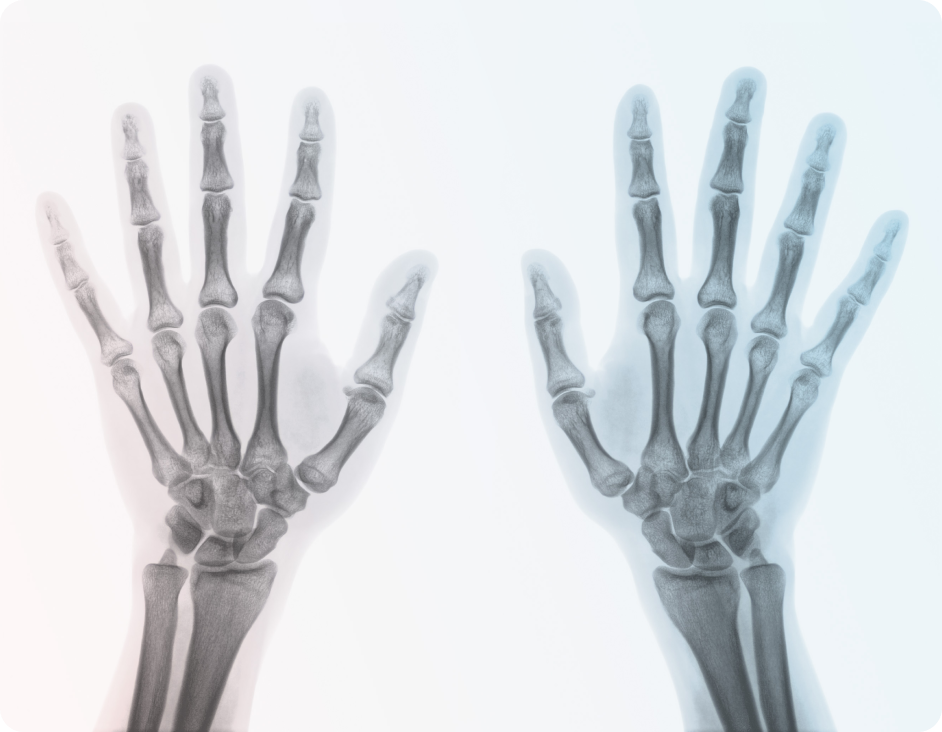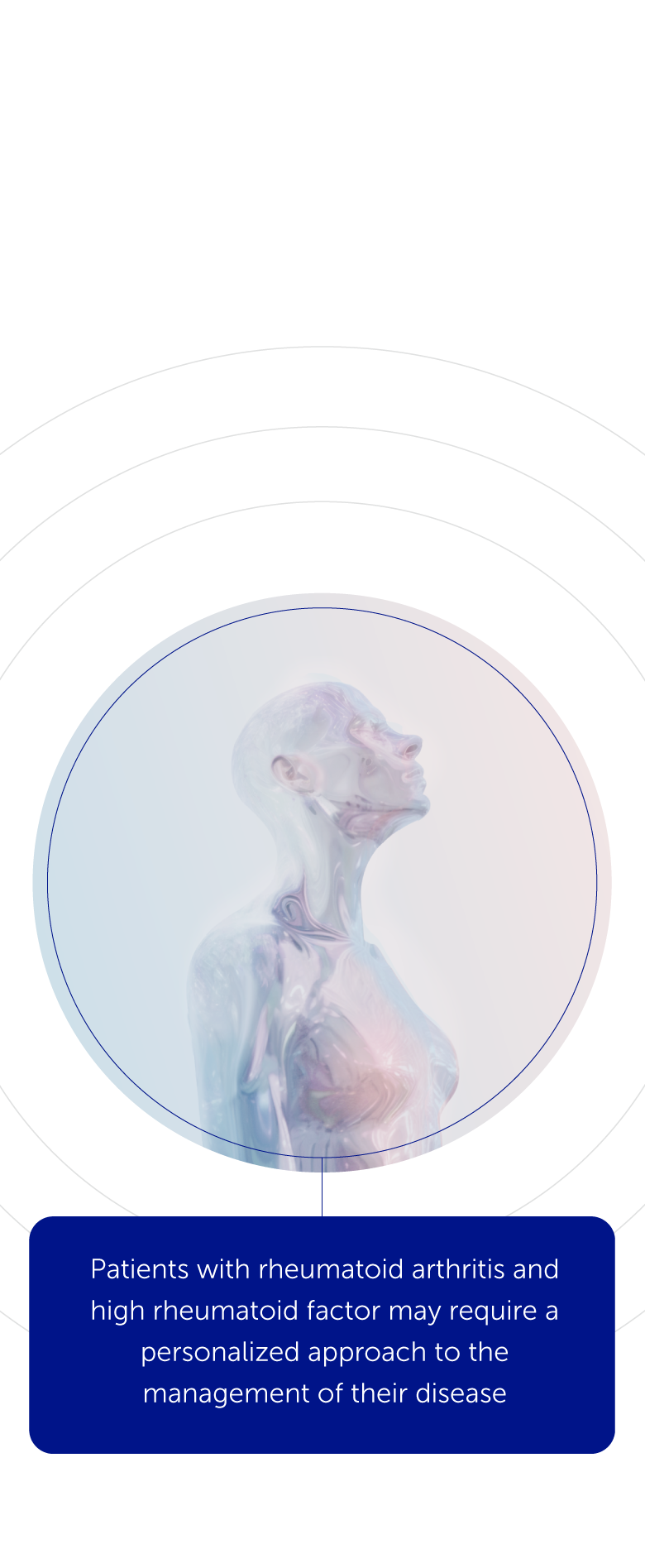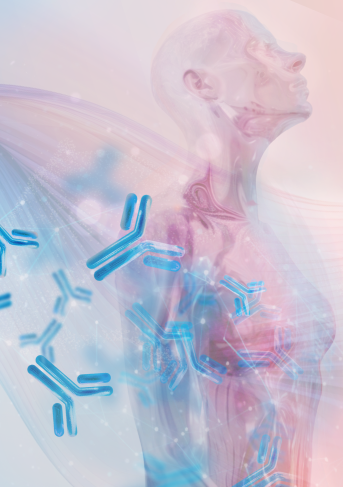

The Role of Rheumatoid Factor in Rheumatoid Arthritis
Discover more about the role of rheumatoid factor in rheumatoid arthritis
SCROLL TO DISCOVER
Personalizing approaches to rheumatoid arthritis treatment. What role could rheumatoid factor play?
-
1937
Rheumatoid factor first discovered in a patient with rheumatoid arthritis1
-
1956
Included in the ARA diagnostic criteria for definite rheumatoid arthritis as “positive sheep cell agglutination”2
-
1958
Characterization of antibodies and gamma globulin that interact with rheumatoid factor3
-
1962
Rheumatoid factor identified as a poor prognostic factor in rheumatoid arthritis4
-
1969
Rheumatoid factor binding to Ig causes complement activation5
-
1987
Included in the 1987 ACR revised classification criteria for rheumatoid arthritis6
-
2013
Rheumatoid factor has limited clinical usefulness in monitoring disease activity and treatment response7
-
PRESENT
Rheumatoid factor is widely recognized as a diagnostic and prognostic marker for rheumatoid arthritis and is used to inform better disease management7,8

High rheumatoid factor levels (above 200 IU/ml) are associated with higher probability of radiographic progression9
Learn about recent data and their impact on rheumatoid arthritis clinical management
What do we know about the role of rheumatoid factor in rheumatoid arthritis?


- Innate
- Adaptive
Impact on treatment responses
LEARN MOREImpact on treatment responses
The presence of rheumatoid factor has a clear association with higher levels of disease activity,13 especially when detected at high levels.9,14–20
Therefore, patients with rheumatoid arthritis and high rheumatoid factor experience a more severe and aggressive disease course which requires intensive treatment to improve outcomes.20
Higher levels of disease activity
LEARN MOREHigher levels of disease activity
Many biologic disease-modifying anti-rheumatic drugs used for the treatment of rheumatoid arthritis contain fragment crystallizable (Fc) regions.10 This means that rheumatoid factor can also target the Fc region of these drugs to form immune complexes.11,12
These immune complexes could be impacting treatment response in patients with rheumatoid arthritis and high rheumatoid factor levels.12


Discover the latest data on rheumatoid factor and its impact on rheumatoid arthritis clinical management


Learn more about rheumatoid factor and hear expert insights on how to enhance your clinical practice
Intended for US Healthcare Professionals only
Explore scientific information on UCB medicines used to treat immune-mediated inflammatory conditions
Intended for US Healthcare Professionals only
Uncover the mechanisms driving SpA diseases and information about the science of SpA
Intended for EU Healthcare Professionals only
Discover educational resources to enhance your clinical practice
- Abbreviations: EU: European Union; ACR: American College of Rheumatology; ARA: American Rheumatism Association; Fc: fragment crystallizable; Ig: immunoglobulin; SpA: spondyloarthritis; US: United States.
- References: 1. Waaler E. APMIS. 2007;115(5):422–38; 2. Ropes MW, et al. Ann Rheum Dis. 1957;16(1):118–25; 3. Edelman GM, et al. J Exp Med. 1958;108(1):105–20; 4. Ragan C, Farrington E. JAMA. 1962;181(8):663–7; 5. Zvaifler NJ. J Clin Invest. 1969;48(8):1532–1542; 6. Arnett FC, et al. Arthritis Rheum. 1988;31(3):315–24; 7. Ingegnoli F, et al. Dis Markers. 2013;35(6):727–34; 8. de Brito Rocha S, et al. Adv Rheumatol. 2019;59(1):2; 9. Vastesaeger N, et al. Rheumatology (Oxford). 2009;48(9):1114–21; 10. Senolt L. F1000Res. 2019;8:F1000 Faculty Rev-1549; 11. Maibom-Thomsen SL, et al. PLoS One. 2019;14(6):e0217624; 12. Levy RA, et al. Immunotherapy. 2016;8(12):1427–36; 13. Aletaha D, et al. Arthritis Res Ther. 2015;17(1):229; 14. Albrecht K, et al. Arthritis Res Ther. 2017;19(1):68; 15. Sobhy N, et al. Egypt Rheumatol. 2022;44(4):325–8; 16. van Zeben D, et al. Ann Rheum Dis. 1992;51(9):1029–35; 17. Cojocaru M, et al. Maedica (Bucur). 2010;5(4):286–91; 18. Nell VPK, et al. Ann Rheum Dis. 2005;64(12):1731–6; 19. England BR, et al. Arthritis Care Res (Hoboken). 2016;68(1):36–45; 20. Katchamart W, et al. Rheumatol Int. 2015;35(10):1693–9.